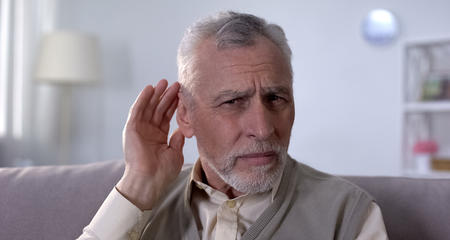Dealing with dizziness, or vertigo? A full spectrum of tests is offered by Froedtert & the Medical College of Wisconsin to help diagnose the cause and extent of balance disorders. Tests are noninvasive and are performed in an outpatient setting in about 30 minutes to two hours, depending on the test.
Evoked Potential Testing – Measuring Response Time
Evoked potential tests measure the time it takes for nerves to respond to stimulation. The tests also measure the extent of the response.
Auditory Brainstem Response (ABR) and Auditory Steady State Response test (ASSR)
Auditory Brainstem Response (ABR) and Auditory Steady State Response (ASSR) are computerized "hearing tests" used to measure the "brain waves" the brain produces when it hears sounds. During the tests electrodes (or wires) are placed on the forehead and ears. The electrodes will measure the response to sound from the ears and brain. The tests cause no discomfort. To identify hearing loss at specific pitches, an ASSR test may be used with the ABR. The ABR test is extremely helpful in ruling out or confirming the presence of tumors, such as acoustic neuroma, that originate from one of the balance nerves in the ear canal. It can also help diagnose certain nervous system diseases such as multiple sclerosis.
Electrocochleography (ECOG)
When dizziness is the concern, electrocochleography (ECOG) testing is typically ordered to assess for or monitor Ménière's disease, also known as endolymphatic hydrops. This is an inner ear disorder that affects balance and hearing. During the test, electrodes (or wires) are placed on the forehead and one earlobe, while another is placed directly in the ear canal. While resting quietly, you will hear clicking sounds through earplugs. Your brain's response to the sound will be recorded by a computer for analysis.
To make sure the test is accurate, you may be asked to discontinue certain medications 48 hours prior to testing.
Vestibular-Evoked Myogenic Potential (VEMP)
The VEMP is a computerized test used to measure part of the vestibular (balance) system that may be related to dizziness. During the test, you will be asked to lay flat or sit upright on an exam table. Flat recording electrodes (or wires) will be placed on your shoulders, forehead, and neck. The electrodes will measure the response of the vestibular (balance) system while loud sounds are presented to your ears through small earplugs. When you hear the sound, you will be asked to raise or turn your head sharply in one direction for about 45 seconds. You may feel a slight strain in the muscles on your neck during the testing, but there is no real discomfort. If you have severe neck problems, please let us know before the test.
Auditory Processing Disorder (APD) Testing
The auditory nervous system is a complex network that transmits sound from both ears to be interpreted by the brain. Central auditory processing (CAP) is the set of mechanisms that communicate the sound information. For instance, some CAP mechanisms localize sound, identify differences between sounds and words, detect gaps or intervals between sounds and help you hear in the midst of background noise.
When one of these mechanisms isn’t working as it should, it is called an auditory processing disorder (ADP) or CAP disorder. The purpose of ADP testing is to determine if a disorder exists and to what degree. It uses specialized procedures specifically designed to diagnose a central auditory processing disorder.
Facial Nerve Testing - Electroneuronography (ENoG)
Electroneuronography (ENoG) measures the function of the facial nerve (NVII), which controls the movements of the face. Since the facial nerve passes through the middle ear space and other structures related to hearing, facial nerve problems can cause hearing loss, pain and balance problems. Patients who have partial or complete facial weakness or paralysis are candidates for the ENoG test procedure.
During the ENoG test, flat electrodes (or wires) are placed on the back of the neck and near the crease on both sides of the nose. The electrodes measure the response from the facial nerve.
Other Balance Tests
Videonystagmography (VNG)VNG precisely measures eye movements in order to evaluate balance. VNG provides diagnostic information about the function of the inner ear and central vestibular (balance) systems.
Rotary Chair TestAlso used to evaluate dizziness/balance problems, the Rotary Chair test supplements the VNG results and helps determine how the inner ear balance system is working. During the test, eye movements are precisely measured with goggles while the patient is sitting in a slowly rotating chair in a darkened booth.
PosturographyThis balance test assesses the ability to keep standing upright and maintain a proper gait or manner of walking in the variety of conditions encountered in everyday life.
Virtual Visits Are Available
Safe and convenient virtual visits by video let you get the care you need via a mobile device, tablet or computer wherever you are. We'll assess your condition and develop a treatment plan right away. To schedule a virtual visit, call 414-777-7700.

